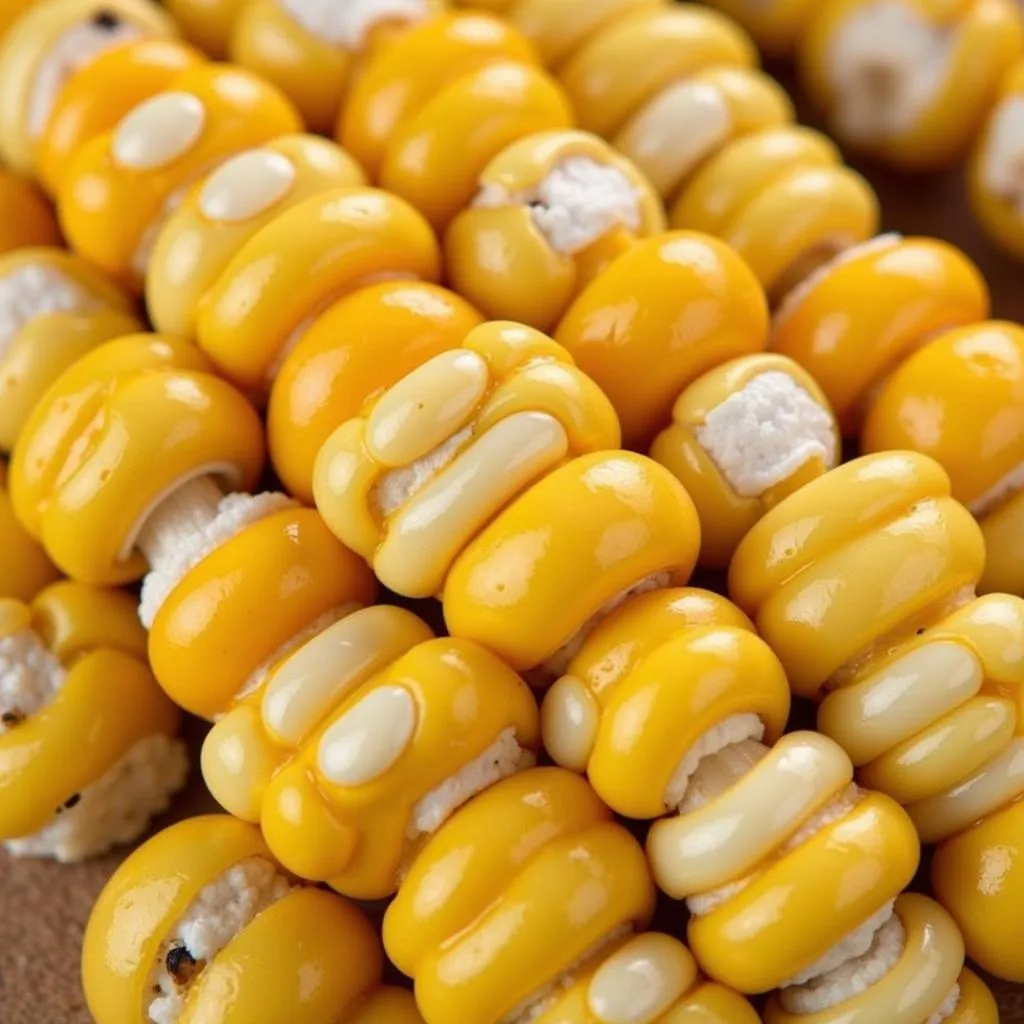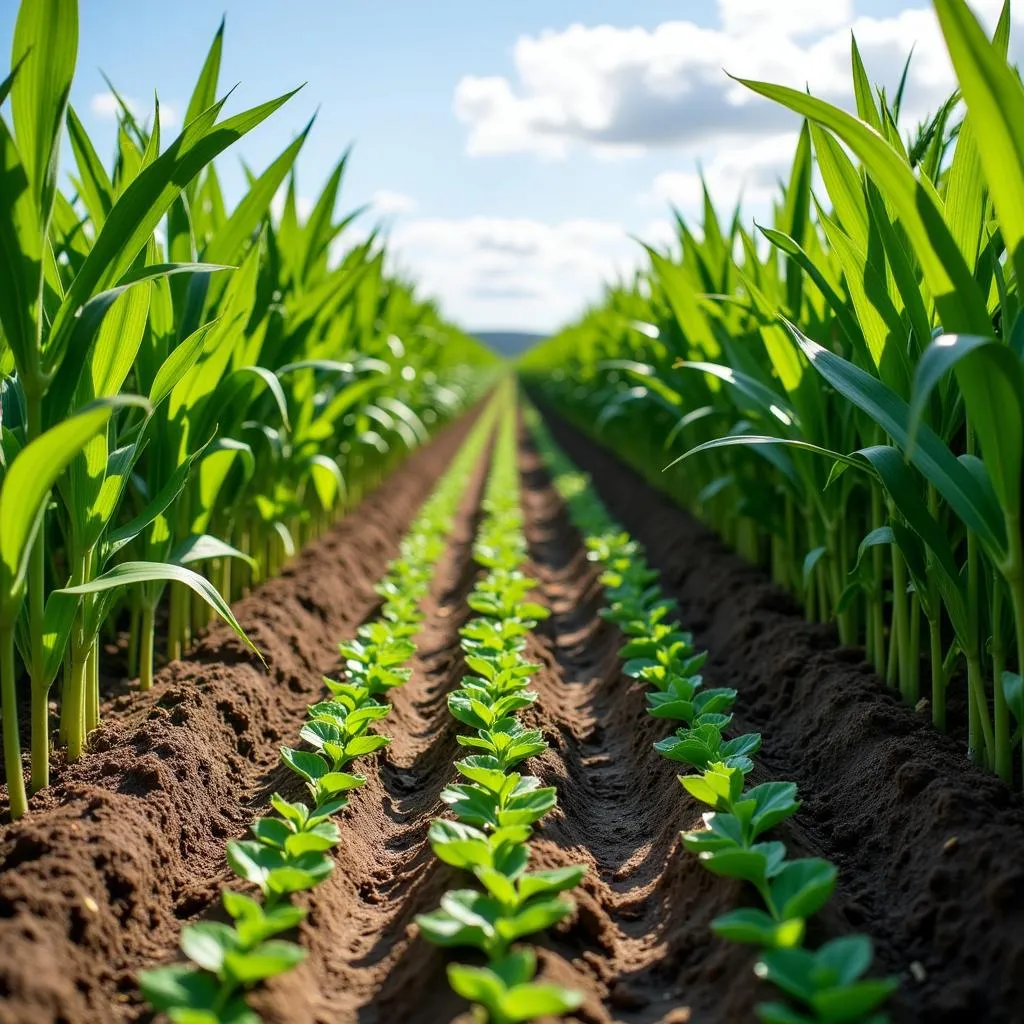Choosing the right corn seed for your food plot can make all the difference between a thriving wildlife buffet and a disappointing patch of scraggly stalks. Whether you’re a seasoned hunter looking to attract deer or a nature enthusiast hoping to provide sustenance for turkeys and other critters, understanding the nuances of corn seed selection is key.
 Different corn seed varieties for food plots.
Different corn seed varieties for food plots.
Why Choose Corn for Your Food Plot?
Corn offers numerous benefits as a food plot staple. Its high carbohydrate content provides essential energy for wildlife, especially during the crucial fall and winter months when natural food sources are scarce. Additionally, corn is relatively easy to grow and can thrive in various soil types with proper care.
Factors to Consider When Selecting Corn Seed for Food Plots
Navigating the world of corn seed can feel overwhelming with countless varieties available. To simplify your decision, focus on these critical factors:
1. Maturity Group and Growing Season
Corn varieties are classified into maturity groups based on the number of days they require to reach maturity. Selecting a variety that aligns with your region’s growing season is crucial for optimal yield.
Example: In northern states with shorter growing seasons, opt for early-maturing corn varieties (80-90 days). In contrast, southern regions with longer growing seasons allow for later-maturing varieties (100-110 days).
2. Soil Type and Drainage
Different corn varieties exhibit varying tolerance levels to soil conditions. Well-drained soils generally support most corn types, while clay-heavy soils might require varieties specifically bred for improved drainage.
Tip: Conducting a soil test can provide valuable insights into your soil’s composition and help you select the most suitable corn seed.
 Healthy corn plants thriving in a well-maintained food plot.
Healthy corn plants thriving in a well-maintained food plot.
3. Wildlife Attraction and Nutritional Value
Consider the specific wildlife species you aim to attract when choosing corn seed. Some varieties offer higher protein content, making them particularly appealing to deer and turkey.
Did you know? Certain corn varieties are specifically bred for enhanced palatability and digestibility for wildlife.
4. Disease and Pest Resistance
Selecting disease and pest-resistant corn varieties can save you from potential headaches and crop losses. Look for varieties with built-in resistance to common corn diseases like Northern Corn Leaf Blight and Gray Leaf Spot.
Popular Corn Seed Options for Food Plots
1. Whitetail Institute Imperial Whitetail Clover
This variety is a popular choice among hunters as it combines the attraction of corn with the nutritional benefits of clover. This blend creates a food source that attracts deer throughout the year.
2. Antler King Trophy Corn
Designed for maximum attraction, Antler King Trophy Corn boasts large ears and a sweet aroma that deer find irresistible.
3. Mossy Oak BioLogic Green Patch Plus
This blend combines corn with other highly palatable plants like peas and sunflowers, offering a diverse and nutritious food source for deer and other wildlife.
Expert Insights
“Selecting the appropriate corn seed variety for your specific region and desired wildlife is crucial for a successful food plot,” says Dr. Emily Carter, a wildlife biologist specializing in habitat management. “Consider factors such as soil type, growing season, and wildlife preferences to maximize your chances of success.”
Conclusion
Creating a thriving food plot requires careful planning and choosing the right corn seed is paramount. By considering factors like maturity group, soil type, wildlife preferences, and disease resistance, you can create a food plot that attracts and nourishes wildlife while enhancing their habitat. Remember to consult with local experts or agricultural extension offices for region-specific recommendations.
FAQs
1. When is the best time to plant corn for a food plot?
The ideal planting time for corn varies depending on your region’s climate. Generally, it’s best to plant corn after the last frost, when the soil temperature reaches a consistent 50-55°F (10-13°C).
2. How much corn seed do I need per acre?
Seeding rates for corn can range from 6 to 10 pounds per acre, depending on the variety and desired plant density.
3. Should I fertilize my corn food plot?
Yes, fertilizing your corn food plot is essential for optimal growth and yield. Conduct a soil test to determine the specific nutrient requirements of your soil.
4. How do I control weeds in my corn food plot?
Implementing weed control measures is crucial, especially during the early stages of corn growth. This can include pre-emergent herbicides and/or cultivation techniques.
5. What are some other plants I can include in my food plot?
Consider adding plants like clover, alfalfa, soybeans, or brassicas to provide additional food sources and attract a wider variety of wildlife.
Looking for More Food Plot Tips?
Check out our article on food plots for sandy soil for expert advice on establishing successful food plots in challenging soil conditions.
Let Mina Cones Food help you create a thriving wildlife habitat. Contact us at 02437655121, email us at minacones@gmail.com, or visit our store at 3PGH+8R9, ĐT70A, thôn Trung, Bắc Từ Liêm, Hà Nội, Việt Nam. We have a 24/7 customer service team ready to assist you.